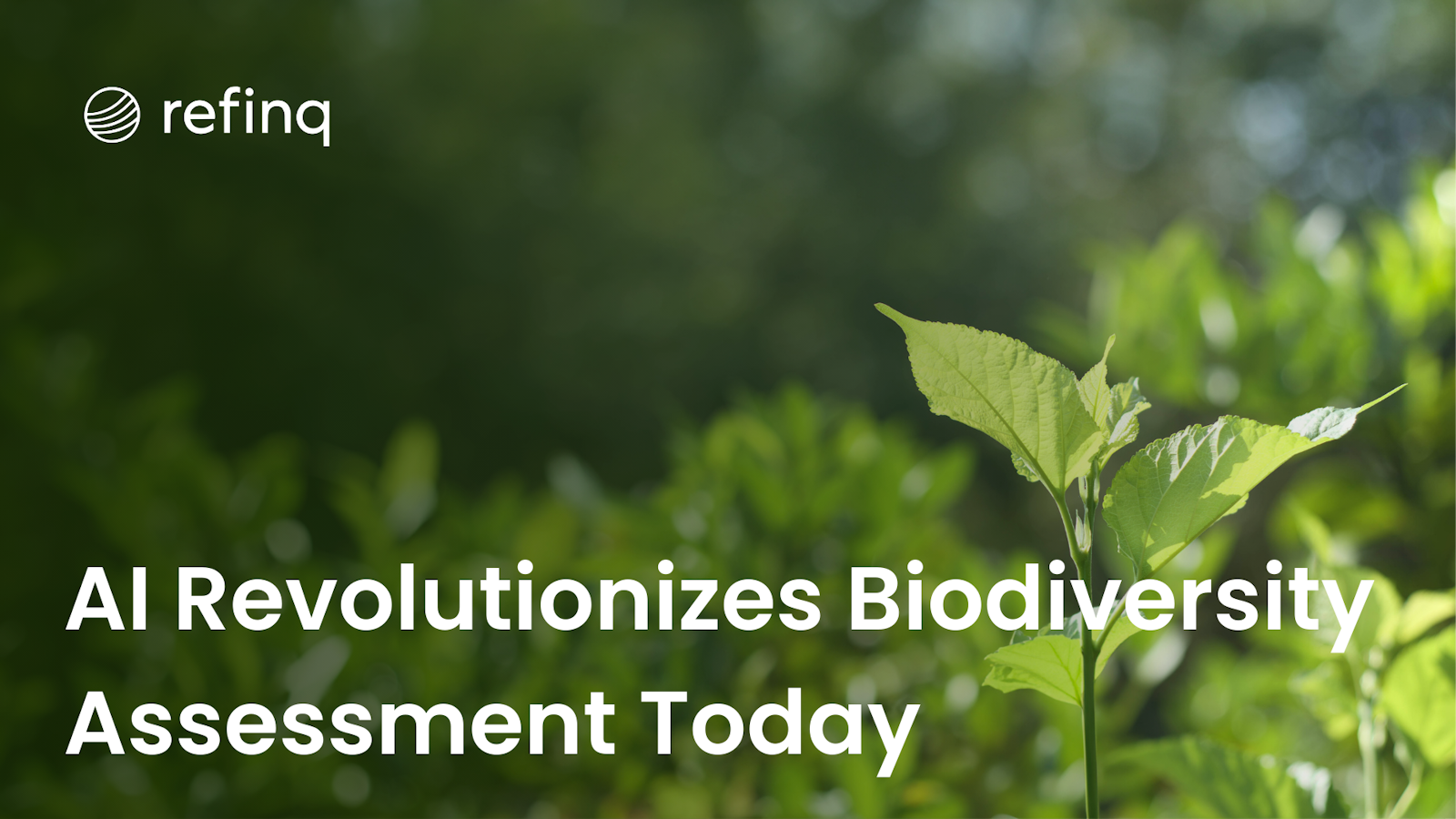

Artificial Intelligence (AI) is revolutionizing biodiversity assessment, offering unprecedented tools to monitor and protect our planet's ecosystems. Businesses are beginning to realize that biodiversity may be more important to their operations than previously understood. (Learn why biodiversity matters to your business). This transformation is not only enhancing conservation efforts but also providing companies with valuable insights to mitigate environmental risks. Organizations like refinq are at the forefront of this revolution, utilizing AI to provide advanced climate and biodiversity risk assessments. (Discover how refinq empowers businesses).
The integration of AI in biodiversity assessment enables real-time data analysis, predictive modeling, and automated monitoring, which are crucial for addressing the biodiversity crisis. According to the Global Partnership on Artificial Intelligence (GPAI), AI offers significant opportunities for biodiversity conservation and requires strategic actions to maximize its benefits. (Read the GPAI report).
Economic Value: Biodiversity supports ecosystem services that are vital for business operations, such as pollination, water purification, and climate regulation.
Risk Management: Understanding biodiversity impacts helps companies mitigate risks related to resource scarcity and regulatory compliance.
Corporate Responsibility: Businesses are increasingly held accountable for their environmental footprint by stakeholders and consumers.
(Explore the economic benefits of biodiversity).
Data Limitations: Manual data collection is time-consuming and often lacks real-time insights.
Accessibility Issues: Remote or hazardous locations are difficult to monitor regularly.
Complex Data Analysis: Interpreting vast amounts of ecological data requires significant expertise.
Automated Image Processing: AI algorithms analyze images from cameras and satellites to identify species and monitor populations. (Learn how AI processes wildlife images).
Remote Sensing: AI enhances satellite data to monitor large and inaccessible areas, providing real-time ecosystem health indicators.
Species Distribution Models: AI predicts where species are likely to be found, aiding in conservation planning.
Climate Impact Forecasting: Machine learning models forecast how climate change may affect biodiversity.
Poaching Prevention: AI analyzes patterns to predict and prevent illegal activities.
Habitat Restoration: Identifies areas in need of restoration and monitors the success of interventions.
(Discover how AI transforms conservation).
Immediate Data Access: AI enables the collection and analysis of data in real-time, allowing for swift responses to environmental threats.
Global Coverage: With satellite imagery and remote sensors, AI can monitor biodiversity across the entire planet.
(Read about AI's role in biodiversity).
Improved Identification: AI algorithms can accurately identify species from images or sounds, reducing human error.
Data Processing: AI handles large datasets more efficiently than traditional methods, accelerating research and decision-making.
Predictive Analytics: AI forecasts potential biodiversity loss, enabling preventative measures.
Resource Allocation: Helps prioritize areas and species that need immediate attention.
Organizations are leveraging AI to tackle biodiversity challenges:
SmartSocs: Uses AI for real-time monitoring of wildlife, aiding in conservation efforts. (Read about SmartSocs' impact).
IBM's Role: IBM employs AI to analyze ecological data, helping scientists make informed decisions. (Learn about IBM's initiatives).
Centre for Ecology & Hydrology: Highlights how AI accelerates data processing for biodiversity research. (Explore their findings).
Data Quality and Availability: Incomplete or biased data can affect AI model accuracy.
Ethical Considerations: Ensuring that AI deployment respects privacy and does not harm local communities.
Technical Barriers: Limited access to technology and expertise in developing regions.
(Explore challenges in AI for biodiversity).
Collaboration Across Sectors: AI fosters partnerships between tech companies, conservationists, and governments.
Innovation in Conservation Techniques: AI opens new avenues for research and monitoring methods.
Scalable Solutions: AI applications can be scaled globally, benefiting biodiversity conservation worldwide.
(Learn how AI revolutionizes conservation).
refinq is a pioneering SaaS platform designed to help enterprises effectively manage environmental risks through advanced climate and biodiversity risk assessments. With the tagline “Your physical assets are exposed to mother nature. It’s time to act.” (Visit refinq), refinq offers real-time risk evaluations and forecasts of future environmental impacts, processing data for any global location with a granularity of up to 25 meters.
Extensive Data Integration: Processes over 2.5 billion data points from earth observation and climate models to create comprehensive risk profiles.
Advanced AI and Machine Learning: Utilizes AI for geospatial analysis, translating complex environmental data into actionable insights.
User-Friendly Tools: Features climate and biodiversity risk analysis tools, tailored for due diligence and portfolio impact assessments.
Regulatory Compliance: Aligns with international frameworks like TNFD, CSRD, ESRS, and SBTN, ensuring compliance with regulatory demands.
Future Forecasting: Capable of forecasting environmental impacts based on four climate scenarios extending to the year 2100.
By incorporating refinq into their strategies, businesses can navigate nature-related risks more effectively, develop sustainable, nature-positive strategies, and ensure regulatory compliance. (Discover refinq's biodiversity solutions).
AI is undeniably transforming biodiversity assessment, offering powerful tools to monitor, predict, and protect the natural world. For businesses, embracing AI-driven biodiversity assessments is not just an environmental imperative but also a strategic advantage. Understanding and acting upon biodiversity risks can lead to sustainable operations, improved stakeholder relations, and long-term success.
Platforms like refinq exemplify how AI can be harnessed to provide actionable insights, enabling companies to make informed decisions and contribute positively to environmental conservation.
Why Biodiversity May Be More Important to Your Business Than You Realize (EY)
Biodiversity and AI: Opportunities and Recommendations for Action (GPAI)
Biodiversity and AI: Revolutionizing Conservation (Smart SOCs)
How AI Is Transforming Conservation (Global Landscapes Forum)